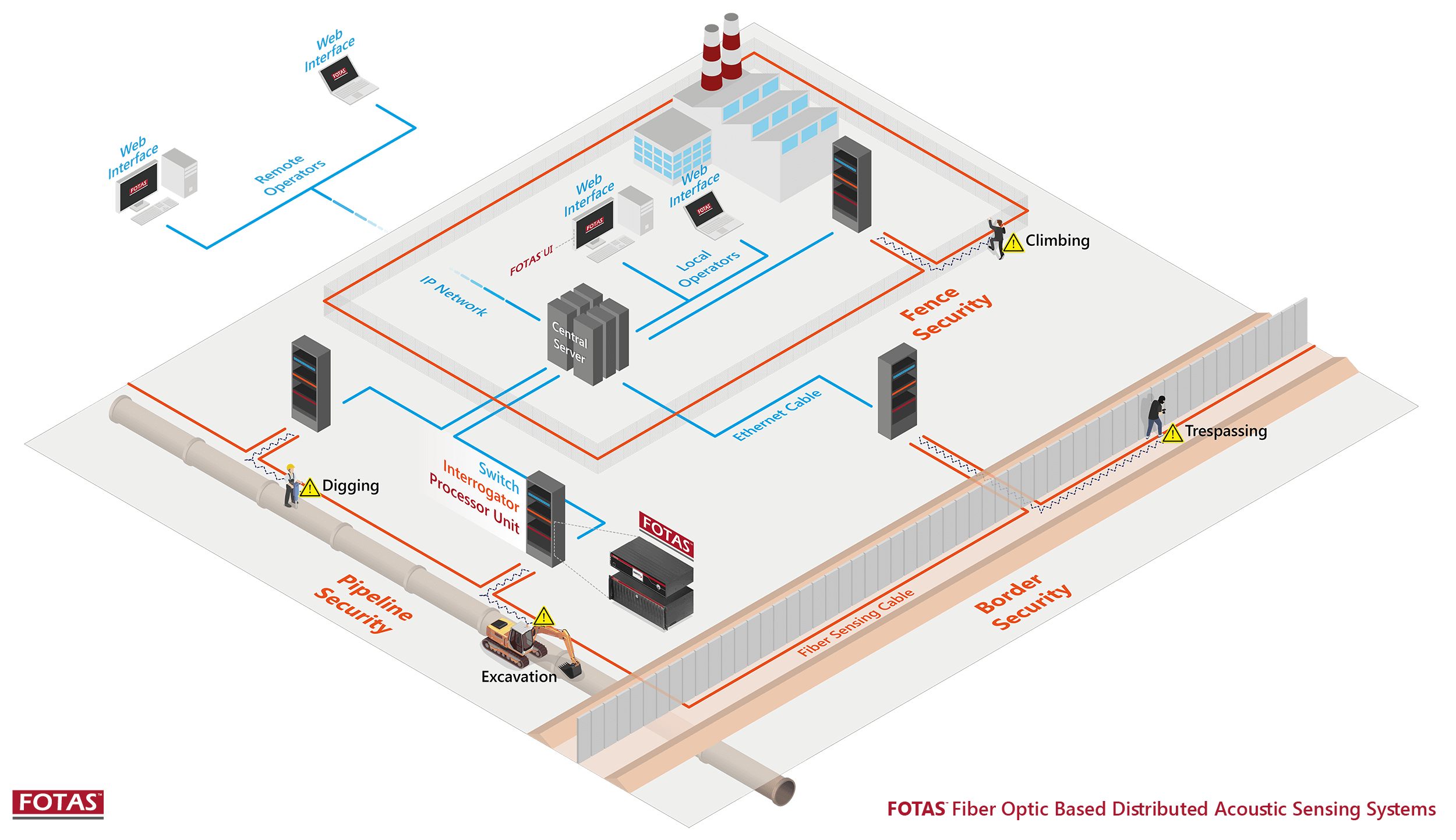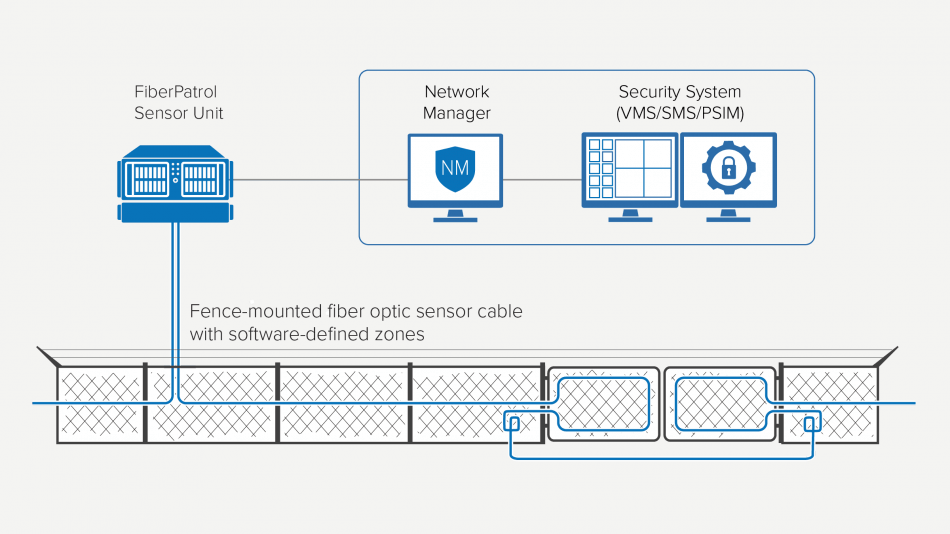Reasons to Pick a Fiber Optic Security System for Maximum Protection and Speed
Why Fiber Optic Safety Systems Are the Future of Protection
The change to fiber optic protection systems marks a significant improvement in the realm of security, driven by their extraordinary information transmission capabilities and resilience to external disturbances. As the landscape of safety progresses alongside emerging innovations such as AI and IoT, the potential for fiber optics to enhance and redefine safety and security infrastructures becomes progressively evident.
Benefits of Fiber Optic Equipments
One of the key benefits of fiber optic systems is their remarkable bandwidth capacity, which facilitates the transmission of big quantities of information over cross countries without considerable loss. This particular is specifically advantageous for safety and security applications that call for the continuous surveillance and transfer of high-def video clip feeds, sensor data, and other essential details. Fiber optics can fit the growing demands of modern-day safety systems, making certain that information stays undamaged and trustworthy.
Furthermore, fiber optic cables are less susceptible to electro-magnetic disturbance, which can be a considerable concern in settings with different electronic devices. This resistance enhances the honesty of the data being transferred, consequently reducing the danger of information breaches or system failures. Fiber optic systems are inherently more protected than conventional copper cords, as tapping into a fiber optic line without discovery is exceedingly hard.
The sturdiness of fiber optic cable televisions also adds to their charm. They are immune to environmental elements such as dampness and temperature fluctuations, minimizing maintenance expenses and increasing system longevity. Overall, these advantages setting fiber optic systems as a robust and reliable choice for contemporary safety and security frameworks, ensuring trusted and secure information transmission.
Boosted Data Transmission Rate

The ability to send large amounts of data rapidly assists in the smooth combination of high-def video feeds and advanced analytics. Security systems can now process and analyze details in real-time, improving feedback times and situational understanding. In addition, fiber optic links sustain longer transmission distances without degradation of signal quality, making them perfect for extensive safety networks.
The enhanced rate of fiber optic systems not just boosts the effectiveness of safety procedures but additionally lowers latency. This is specifically essential in vital circumstances where prompt decision-making can protect against protection breaches or alleviate prospective risks. As organizations remain to focus on safety and security and effectiveness, the need for rapid and trustworthy data transmission will definitely strengthen fiber optic systems as a foundation of contemporary protection facilities.
Resistance to Interference
Fiber optic look these up safety systems consistently show extraordinary resistance to electro-magnetic interference, a crucial advantage in settings susceptible to electronic sound. Unlike conventional copper cables, which can be adversely impacted by magnetic fields, radio regularity interference, and various other forms of electric disruption, fiber optic cable televisions make use of light to transmit data. This fundamental residential or commercial property makes certain that the signals continue to be clear and unchanged, regardless of bordering electronic activity.
Making use of glass or plastic fibers in fiber optic innovation produces a barrier against disturbance, permitting trusted data transmission even in tough situations such as industrial centers, metropolitan locations with high electronic traffic, or locations near radio towers. This particular substantially minimizes the likelihood of signal deterioration or loss, making fiber optic systems specifically appropriate for safety applications where integrity and accuracy of data are extremely important.
Furthermore, this resistance to disturbance improves the total performance and reliability of safety and security systems, guaranteeing that surveillance and alert systems work effortlessly. In a world where safety is significantly endangered by innovative technologies, the durability of fiber optic systems stands out as a pivotal feature, reinforcing their standing as a vital part of contemporary security infrastructure.
Cost-Effectiveness In Time
Substantial price savings can be achieved with time with the execution of fiber optic you could try this out security systems. While the first investment might seem higher contrasted to traditional copper-based systems, the long-term economic advantages emerge with reduced functional and upkeep costs (fiber security). Fiber optic cable televisions are inherently more long lasting and less vulnerable to ecological variables, which converts to lower substitute and repair service costs over their lifespan
Additionally, fiber optic systems call for much less power to operate, which better reduces power costs. Improved information transmission capabilities permit fewer repeaters and amplifiers, reducing tools investment and improving setup procedures. The scalability of these systems also adds to cost-effectiveness, as organizations can increase their safety and security infrastructure without incurring considerable added costs.
An additional element to take into consideration is the increased performance in monitoring and reaction abilities that fiber optics give. Boosted real-time data transmission can bring about quicker case response times, possibly mitigating losses and obligations connected with security breaches. In amount, the long-lasting benefits of fiber optic safety systems not only validate the initial expense but additionally place them as an economically sensible selection for companies looking for durable defense he has a good point solutions.

Future Innovations in Safety
Progressing technologies are readied to change safety systems, integrating fabricated knowledge (AI) and artificial intelligence to enhance risk detection and reaction abilities. These technologies will enable security systems to assess vast amounts of information in real-time, recognizing patterns and anomalies that indicate prospective threats. This positive technique will enable quicker decision-making and more reliable case responses.
Furthermore, the unification of the Internet of Things (IoT) is paving the means for interconnected security devices, offering thorough monitoring and tracking. Smart sensors can pass on details concerning environmental modifications, while automated informs can notify protection employees quickly of dubious tasks.
In addition, the development of biometric modern technologies will certainly better boost security mechanisms. Facial recognition, finger print scanning, and retina recognition are becoming extra advanced, giving layers of verification that are challenging to bypass.
Conclusion
Finally, fiber optic safety systems stand for a considerable advancement in security innovation, offering unequaled data transmission rate, resistance to electromagnetic disturbance, and long-lasting cost-effectiveness. As the demand for sophisticated safety services proceeds to expand, the integration of optical fiber with emerging technologies such as AI, IoT, and biometrics will even more enhance safety infrastructures (fiber security). The mix of these advancements will make sure an extra safe and responsive environment, solidifying optical fiber as a cornerstone of future protection systems